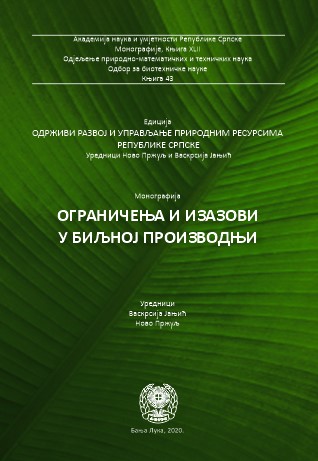Strategies and measures of integrated pest management
DOI:
https://doi.org/10.7251/EORU2003135TKeywords:
Integrated pest, management (IPM), IPM strategies, administrative, phytosanitary, physical, mechanical, cultural practices, biological and chemical measures of IPMAbstract
In the late 1940s, DDT was discovered as a powerful insecticide that heralded a new era of pest control by the use of pesticides which have enabled a significant increase in yield, simplification of the cultivation system and abandonment of more complex strategies for the protection of cultivated plants. However, excessive use and dependence on pesticide use was soon linked to ecosystem contamination and their adverse effects on human health, the environment and biodiversity. As a result, recently there has been a growing concern in professional circles, as well as in the public because of the reduction of pesticide effectiveness due to the development of resistance of harmful organisms, and also because of the new insights about the risk of their use to human health, contamination of agricultural products and adverse effects on the environment as a whole. In addition, increased costs of developing new active substances of chemical products, market reduction and stricter pesticide registration requirements have contributed to the growing interest in alternative pest control measures, among which a special place belongs to integrated plant protection measures. The paper presents the concept and principles of integrated plant protection, including an overview of the main strategies and tactics of integrated plant protection. In addition, the paper presents a literature review of research and application of integrated measures to control various types of harmful organisms of cultivated plants, which includes the use of various administrative, phytosanitary, physical, mechanical, agrotechnical, biological and chemical measures of integrated plant protection.
